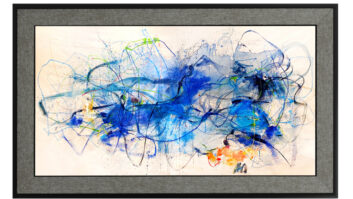Celebrating its 20 anniversary year and extended to five days for the 2019 edition, the mighty Rock In Japan festival also marked the Japanese debut of Martin Audio’s flagship Wavefront Precision Longbow (WPL).
Running on seven stages over two weekends at Hitachi Seaside Park, music lovers from all across Japan congregated at the location. Unlike other large-scale festivals, this specializes in home grown talent and featured some of Japan’s biggest acts. A total combined audience of 337,421 enjoyed wall to wall music across the stages over the five days.
Martin Audio premium systems are now regular fixtures at this event, with the award-winning MLA adopted for the largest, 70,000 capacity Grass Stage. “It was back in 2011 when we first introduced MLA on the Lake Stage,” reports Shuzo Fujii, president of MSI Japan. “This is now the ninth year that the system has been adopted, and its high degree of control has become essential for the festival. Grass Stage has more than 650 ft. depth, and without the need to use many delay towers, MLA can easily achieve the area coverage. At the same time, we can mitigate the noise pollution offsite—few systems can do that.”
Here, 20 elements each side formed the main arrays supported by a further 16 cabinets per side as outfills. In addition, a mighty 48 MLX subwoofers provided low frequency extension.
Proving how effective multicellular technology is for a festival of this size, MLA was also adopted for other stages such as the Park Stage (10,000 cap), Lake Stage (10,000 cap) and Sound of Forest (8,000 cap) with the control offered by MLA also helping to prevent unnecessary sound bleed between stages.
But it was at the aptly named new Buzz Stage (4,500 cap) that visiting production teams showed most interest, as it was here that WPL was making its debut. Martin Audio’s WPL is the largest format in the new Wavefront Precision line up of optimized passive arrays bringing high performance, optimization, and control but with greater flexibility and cost efficiency to large-scale touring and installation applications.
Designed as a complete system with external iKON® iK42 multi-channel amplifiers, automated DISPLAY™ optimization software and VU-NET™ control platform, the more WPL enclosures with dedicated amplifier channels the greater levels of optimization resolution is afforded the user. WPL offers two levels of resolution with ‘One Box’ (to one-amp channel) and ‘Two Box’ (to one-amp channel) available.
WPL incorporates 2 x 12” drivers with Hybrid® horn/reflex loading, 2 x 6.5” cone drivers on a midrange horn which covers the vocal frequency range from 300Hz to 4kHz, and 3 x 1” exit HF drivers operating from 4kHz upwards. Each section features innovative horn-loading techniques and refinements which raise the acoustic performance of WPL both in terms of output and smooth 90° horizontal coverage patterns of the mid and HF horns. Sonically, WPL’s horizontal dispersion pattern translates to a consistent frequency response off-axis, with minimal variation from the on-axis response.
Six WPL elements had been flown per side, driven by three iK42 in 1-box resolution. In addition, two WPC enclosures were stacked as outfills, along with WPM as lip fill—all driven by iK42 amplifiers. The four iK42s were set up at the side of the stage, connected via a Dante audio network. Thanks to the Luminex Gigacore switch which has V-LAN settings, Dante primary and secondary as well as the control signals of VU-Net and APEX Intelli-X3 processor were combined into a single optical cable.
Meanwhile, 10 MLX subwoofers were set under the stage to meet the demand of DJs and provide plenty of low frequency headroom.
One of the sound engineers on duty—Ryuta Ishizaki from rental company MSI Japan—described the system this way: “The smoothness and transition from low to high frequencies was excellent and easy to control. I liked its punchy low end very much, as thick bass is my favorite. The high end was good as always.
“The roof of Buzz Stage was made of vinyl and there were concerns about possible sound reflections. But the controllability was such that this wasn’t an issue and I had no difficulty operating the system.”
For more about Martin Audio, please click to: www.martin-audio.com













